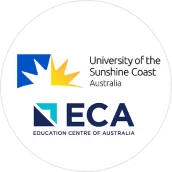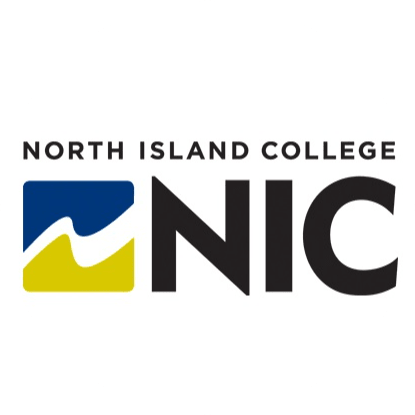• Education Loans
Difference between Private banks, Public banks and NBFCs
3505 Reads
3 min Read
Studying abroad is a dream for many, but the costs involved can be a hurdle. Education loans step in to bridge the gap by providing financial assistance for tuition and other expenses, turning those international ambitions into reality. Read this blog to find the right education loan and compare different loan providers based on their interest rates, eligibility, loan amount, and repayment options.
India stands second in line with the countries with the most students studying abroad. Concentrated in the big four study abroad destinations, US, UK, Canada and Australia, the number of Indian students studying abroad is expected to rise from roughly USD$1 million as of 2019 to between USD$1.5 - 2 Million by 2025.
What is an education loan?
Why apply for an education loan?
| Competitive interest rates | Education loans have a lower interest rate than other loan types. Therefore, students need not worry about paying heavy interest on their study loans. |
| Flexible repayment methods | These loans have various loan repayment methods like standard repayment, income-based repayment and more. Education loan repayment tenures go up to 20 years, depending on the lenders, with at least 6 months of grace period. |
| Tax benefits | Section 80E of income tax exempts students who have taken an education loan from high interest rates. This helps students save up on their taxes during the repayment term. |
| Credit benefits | Timely loan repayments help build a strong credit score, which is important for future loans and mortgages. |
Eligibility criteria for education loan
Secure & Unsecure Education Loan
| Secure Loan | Unsecure Loan |
| Loans that require the borrowers to submit collateral as security to get a loan. | Loans that do not require the borrowers to submit any collateral to get their loan. |
| They usually have lower interest rates as the collateral assets give a sense of security. | They have higher interest rates due to the absence of collateral security. |
| Provided by government partnered banks | Provided by Private banks and other Non-Banking financial companies (NBFCs) |
| Faster and higher amounts of loan sanctioned | Higher amount of loans might call for the need of a co-applicant |
Types of international loan providers
| Public Banks | Public banks are financial institutions owned and operated by the government. These institutions primarily focus on public services as they are run by the government. Public banks provide various subsidies, schemes and loans with lower interest rates to make higher studies accessible to all. |
| Private Banks | These are privately owned banks authorised by the government of India. Private banks offer higher loan amounts, but have higher interest rates when compared to with public banks. Apart from loans, private banks also offer extra services they can benefit from like counselling, financial planning advice, discounts on travel insurance, etc. |
| Non-Banking Financial Corporation | NBFCs are financial companies that offer services similar to banks but do not hold a banking license. NBFCs are approved and work under the regulation of the Reserve Bank of India (RBI) and offer financial assistance to students planning to study abroad. These companies are flexible when it comes to student profiles and offer loan opportunities to those who may face difficulties in securing loans from public sector lenders. |
| Features | Public Banks | Private Banks | NBFCs |
| Ownership | Government owned | Privately owned by shareholders | Privately owned, authorised by the RBI |
| Interest Rates | Low interest rates, subsidised by the government | Competitive interest rates, driven by the market | High interest rates, depending on the borrower’s credit profile |
| Eligibility | Career oriented programs at renowned institutions have a higher chance of approval | Long term professional and technical courses that can help bag a high paying career are generally given preference | Unconventional courses like music, fine arts, culinary management, etc. are also considered for loan approval |
| Loan amount | Lower loan limit, catering to the basic needs | Higher loan limits, covering varied expenses | Higher loan limit, sometimes more than what the banks can offer |
| Collateral Requirements | Collateral Requirements Secure loans often require for a collateral asset to be pledged | Varies depending on the loan amount, with lower loan amounts not needing a collateral | Often demand for a collateral asset or a co-applicant |
| Additional Services | Offer loan schemes and subsidies to girl child and other socially challenged | Offer various additional services like, health insurance offers, counselling, etc. | Offer similar value adding services like the private banks. |
| Benefits | Affordable, wider reach and backed by the government | Competitive rates, faster loan approvals and large loan amounts | Flexible eligibility criteria, higher loan and faster approvals. |
| Repayment Period | Offer grace period with tenures ranging from 6 to 12 months | Offer grace period with tenures ranging from 6 to 15 months | Offer grace period with tenures ranging from 6 to 12 months |
These are only some generic differences between the varied lenders. Factors like processing fees, margin money, etc. also differ depending on the lenders. Students are advised to research and read all the lender specific policies before applying for a loan.
Tips for students planning to study abroad
FAQ
Get great articles direct to your inbox
The latest news, articles, and resources, sent straight to your inbox every month.
Popular Universities to Study Abroad
World class education waiting for you.

Education Centre of Australia (ECA) Group - University of the Sunshine Coast - Adelaide Campus
Victoria, Australia • 4 Programmes
Tuition Fee : AUD 0-0 / year

Mississippi State University - Starkville Main Campus
Mississippi, USA • 293 Programmes
Tuition Fee : USD 27000-28000 / year
-modified-(1).webp)
University of Lethbridge - Calgary Campus
Alberta, Canada • 12 Programmes
Tuition Fee : CAD 20000-20300 / year


New Brunswick Community College - Miramichi Campus
New Brunswick, Canada • 22 Programmes
Tuition Fee : CAD 10500-11000 / year
.png)
Shorelight Group - Wilson College
Pennsylvania, USA • 24 Programmes
Tuition Fee : USD 25000-26000 / year

North Island College - Comox Valley Campus
British Columbia, Canada • 39 Programmes
Tuition Fee : CAD 16000-22500 / year

Global University Systems (GUS) - Medical University of the Americas
Other Any where, USA • 3 Programmes
Tuition Fee : USD 28000-29000 / year
Popular English Language Proficiency Exams
Blogs and Articles
Curated content to keep you updated on the latest education trends, news and more.
ACT vs. SAT: Which One to Choose?
Updated on • Apr 14,2025 01:46 PM IST • Study Abroad
Updated on • Apr 11,2025 05:53 PM IST • IELTS
Backlog Certificate: A Complete Guide
Updated on • Apr 11,2025 01:47 PM IST • Study Abroad Guidance
PTE Score Chart 2025: PTE Exam Scoring System & Calculation
Updated on • Apr 09,2025 05:37 PM IST • PTE
Master's in Computer Science in the USA
Updated on • Apr 08,2025 05:59 PM IST • USA
Top Trending MBA Specialisations in 2025
Updated on • Apr 08,2025 04:47 PM IST • Study Abroad
Describe Your Hometown IELTS Speaking Part 1 Topic
Updated on • Apr 07,2025 05:50 PM IST • IELTS
How to Get a Job in USA in 2025
Updated on • Apr 07,2025 03:19 PM IST • USA
Highest Paying Jobs in the World
Updated on • Apr 01,2025 05:31 PM IST • Study Abroad
Student Life in Ireland in 2025
Updated on • Mar 29,2025 05:50 PM IST • Ireland
Top Public Universities in Germany
Updated on • Mar 26,2025 04:33 PM IST • Germany
Top Universities for Masters in Ireland in 2025
Updated on • Mar 25,2025 04:36 PM IST • Ireland
Cost of Living in Singapore for Indian Students in 2025
Updated on • Mar 22,2025 11:57 AM IST • Singapore
PTE vs IELTS : Know the Difference and Which is Easier?
Updated on • Mar 21,2025 03:38 PM IST • IELTS
Updated on • Mar 20,2025 10:19 AM IST • Germany
Updated on • Mar 12,2025 11:20 AM IST • Ireland
Updated on • Mar 11,2025 01:18 PM IST • USA
Best Countries to Study Abroad for Indian Students in 2025
Updated on • Mar 08,2025 01:24 PM IST • Study Abroad
Updated on • Mar 05,2025 12:19 PM IST • UK
Fastest Growing Job Sectors in Germany in 2025
Updated on • Feb 28,2025 04:04 PM IST • Germany
Related Blogs and Articles
A little effort to provide an authentic and reliable content for keen readers!!
Education Loan Against Property for Studying Abroad
Updated on • 28-05-2024 • Education Loans
Student Education Loan to Study in Canada - Eligibility, Documents Required, How to Apply
Updated on • 18-05-2024 • Education Loans
Education loan with Collateral to Study Abroad
Updated on • 01-05-2024 • Education Loans
Study Loan for Canada : A Complete Guide
Updated on • 18-03-2024 • Education Loans
Foreign Education Loan Approval Factors: Program Type and Country
Updated on • 28-02-2024 • Education Loans
Impact of CIBIL on interest rates, disbursal TAT & Loan Amount
Updated on • 08-01-2024 • Education Loans











